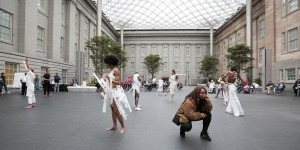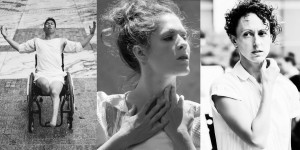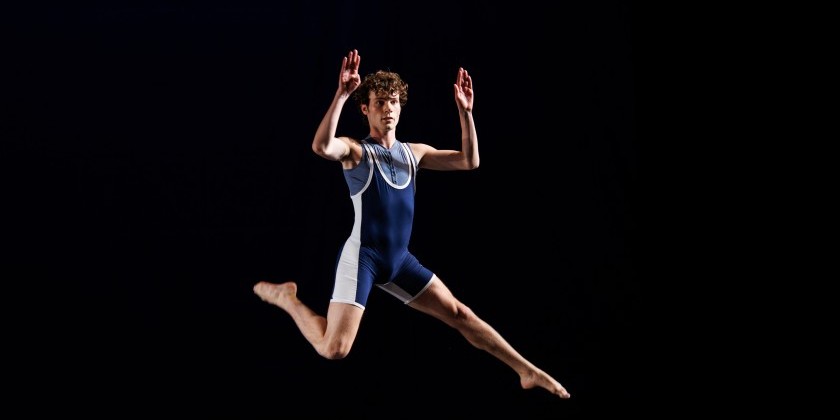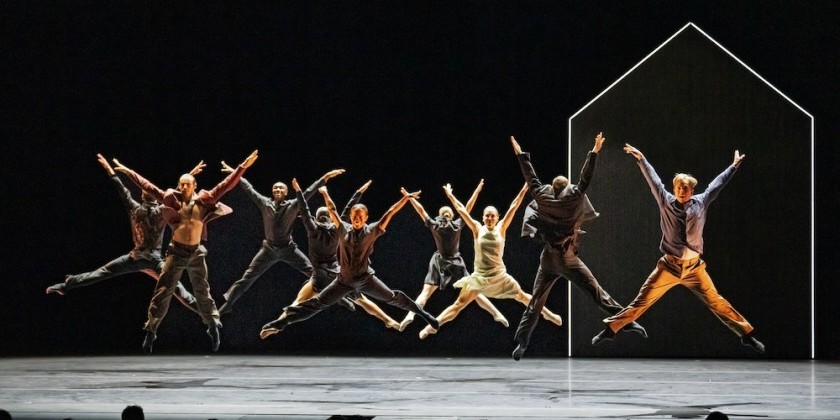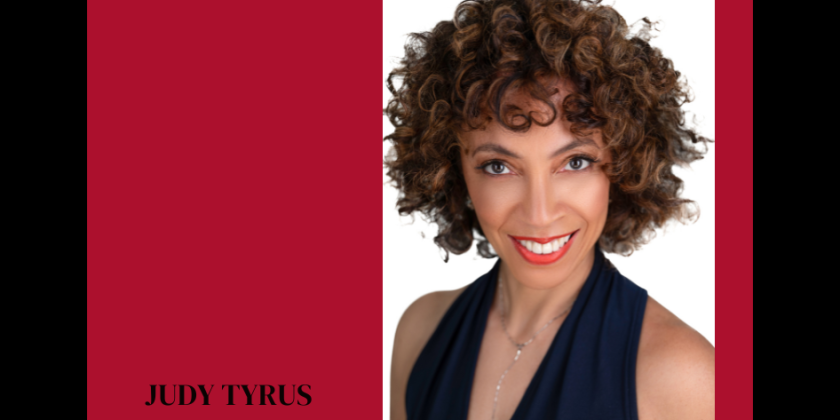
THE DANCE ENTHUSIAST ASKS: Heidi Latsky: An Artist's Life in 20 Pictures
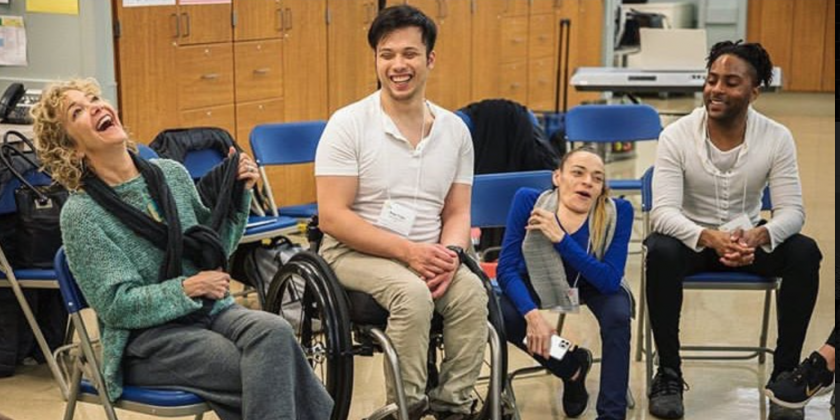
Christine Jowers for The Dance Enthusiast: Heidi Latsky, of Montreal, was a studious, serious teen working on a psychology degree at Ottawa’s Carleton University when a fellow student introduced her to the world of disco dance. It was the late 1970s. Disco was becoming the rage. Bars were open late, and Heidi, though extremely shy, threw herself into dancing mesmerized by her companion’s talent and style. The fun of partnering, twirling, the dips, and lifts made it easy — even for a timid person like Heidi — to unselfconsciously fall in love with movement.
At 19, after graduating from university with honors, Heidi decided to take a year off to enjoy the physical pursuits she never had time for. Dance won her over. At 20, she received a scholarship to Les Ballets Jazz de Montréal and moved to Toronto to study modern dance at York University. It was after seeing Twyla Tharp’s company perform and speaking with the stunning Tharp dancer Sarah Rudner, another artist who began dance training later in life, that Heidi decided New York City was where she needed to be.
Heidi Latsky: An Artist’s Life In 20 Pictures begins right about that time period, in 1983, and the photos continue to the present day where we find Heidi, the artistic director of Heidi Latsky Dance and a leader in the field of mixed-ability dancing, experimenting with film, holograms, and virtual reality during this 2020 Pandemic.
Heidi will tell you that she is still quite shy although now she’s better at dealing with it.
She also likes to call herself “voyeuristic” because she is an avid watcher.
Heidi Latsky: True, but it is because of my shyness that the work I make is voyeurtistic, very internal.
Well, I am not certain if "voyeur" is the right word for this artist, but I do know that understanding, appreciating, and cultivating the exquisite nature of bodies of all abilities is Latsky’s superpower. She grants us, her audience, the opportunity to expand our perceptions of beauty and where it can be found.
HEIDI LATSKY: AN ARTIST'S LIFE IN 20 PICTURES
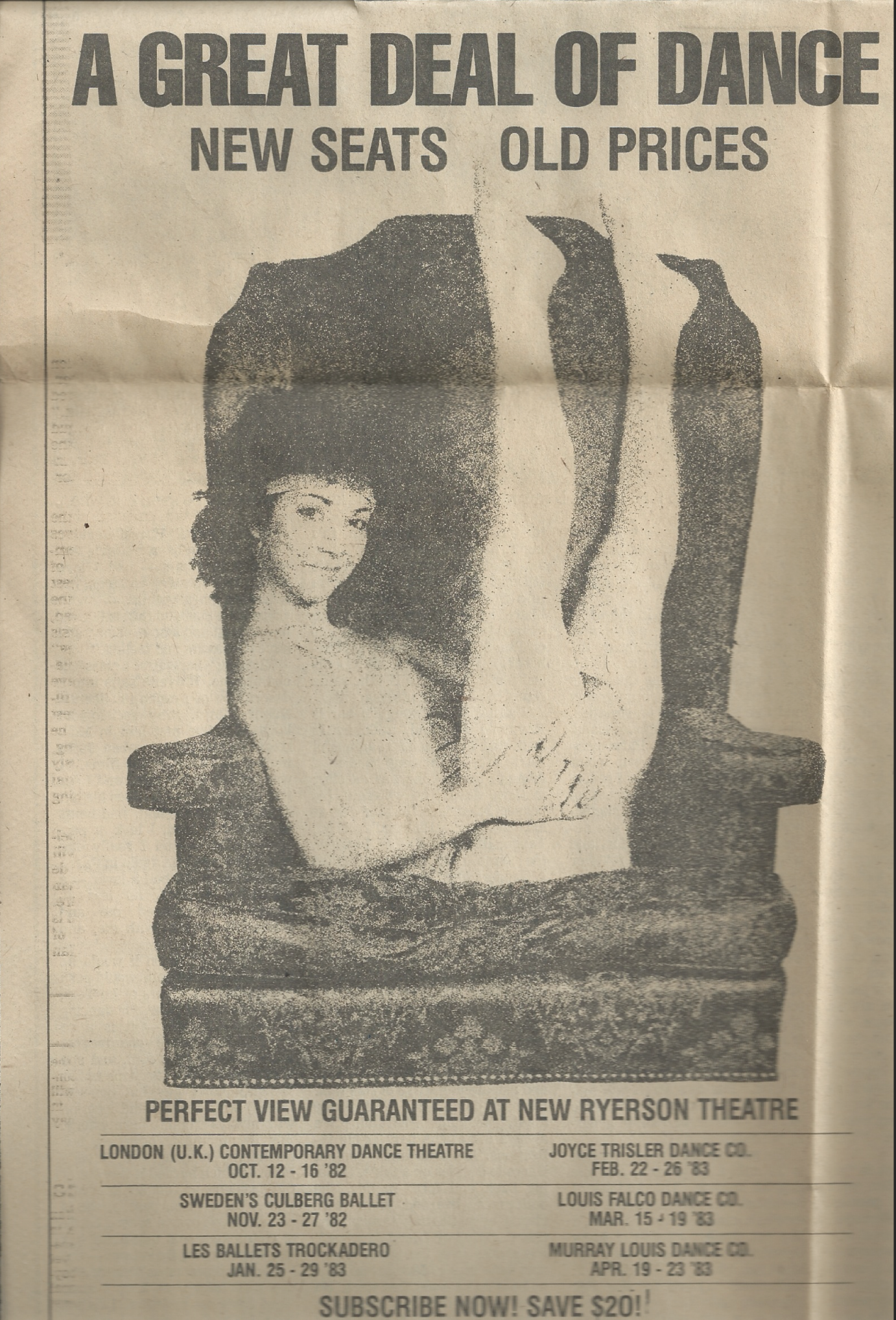
Heidi Latsky: So, this was an ad that I did for the new Ryerson Theatre in Toronto. The funny part of this story is that I don't know how I got that job. They were trying to get me to be seductive, and I couldn't do it.
I finally said to them: You're asking me all these questions, but you know, I love birthday cake. So if you talk to me about birthday cake, you might get what you want. And that's when they got what they wanted.
I love, love birthday cake.
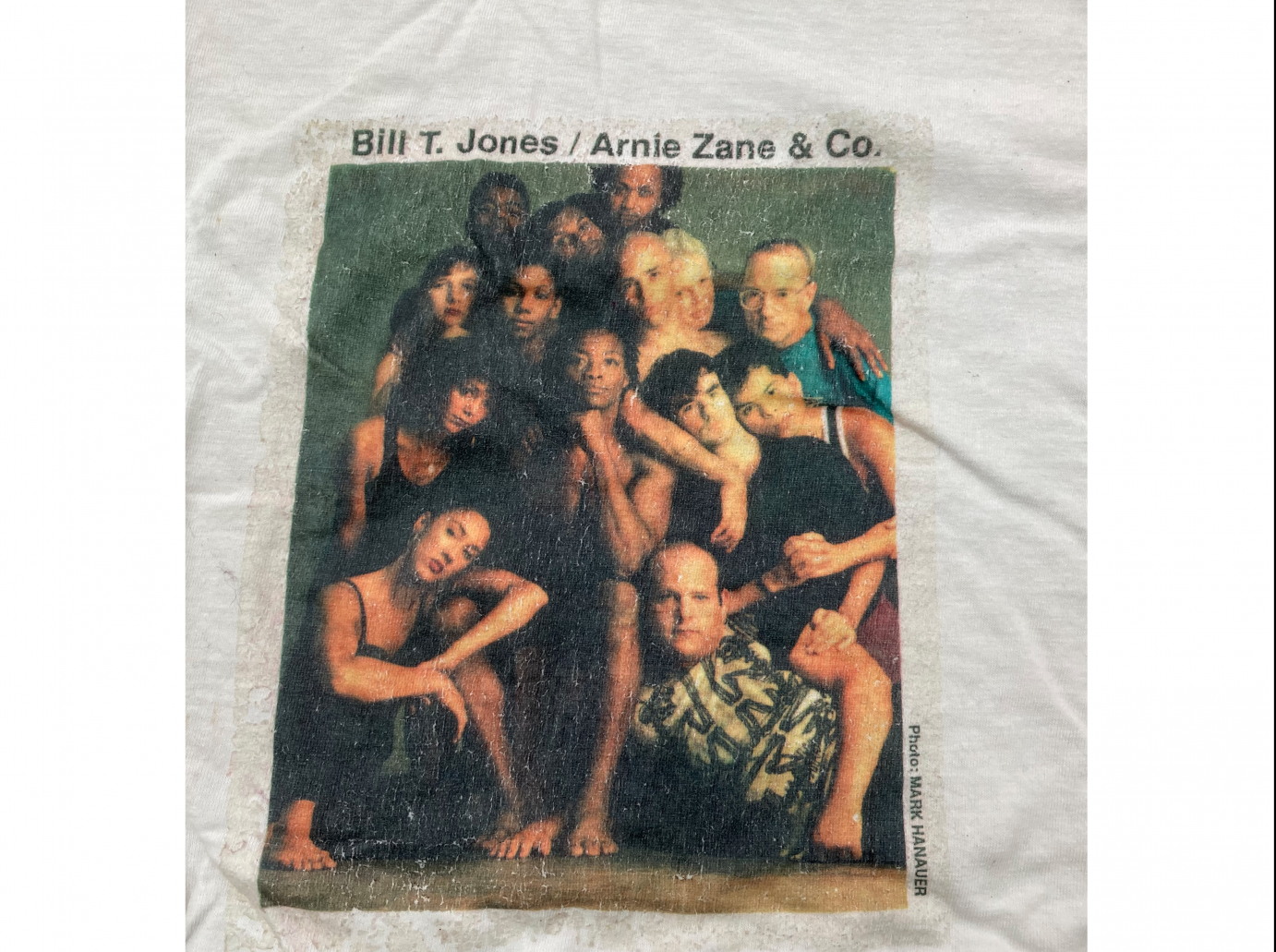
This photo is from Last Supper at Uncle Tom's Cabin, The Promised Land. A professional photographer, Mark Hanauer, took it of our company, Bill T. Jones/Arnie Zane & Co. I have no photos from that time. I mean, I have a lot of photos, but they're in a box somewhere — nothing digital— so I took a photo of this shirt. I love this photograph.
And, weren't you telling me from this piece you had a big breakthrough moment? Can you remind me about that?
HL: When Bill was making Uncle Tom's Cabin . . . some of us were in Glyndebourne, England, for an opera. He said he would be working on the women's section when he went back to the States. And at the time, I was like, "Well, I don't want to be left out of that equation." So I said, "I want to be part of this, but I can't if you're making it while I'm still in Glyndebourne. I'll make something for you."
He came back the next day and said, "Okay, what if you talk about your angriest moment, put it to movement, and you can use any of the movement we've done so far in the piece? "
It was one of the hardest things I've ever done in my career, in my life.
Why?
HL: Initially, it was like, "Wow, I can make my own solo!" Then I had to think about what my angriest moment was because, while I was always indirectly angry, I was never angry directly. I didn't give myself permission to be.
So I thought about a time when I was angry with someone as an adult and tried to dance the way I wanted to. It just didn't work. Eventually, I gave in to the story, wrote it down, memorized it, and created movement that would help me spit the words out.
Three months later, Bill asked me, in front of the whole company — this whole company (pictured), plus the musicians and guest artists — to show the solo I'd made. I had not rehearsed it at all! But what was astounding was I remembered the whole thing. I shook the whole time. Six minutes long, and I was a wreck. My hands were shaking.
At the end, we had this huge conversation about whether this was therapy or art. He decided that it was art and kept the whole thing. Then a couple of weeks before our BAM opening, he told me it was too specific and long, and I had to cut it down to three minutes and make it more universal. This was hard. I had two weeks before we opened . . . but it was a really good move on his part.
People didn't know what I was angry about. They all had their own interpretations. My solo had impact, and it taught me that when you take a risk like that you actually get much stronger. When you connect movement to your emotion, to true emotion, you don't forget it. And I would forget movement all the time!
That's when I started incorporating this exercise [of connecting emotion and story to movement] and modified it for my acting students, then started using it with dancers, and I still use it today.
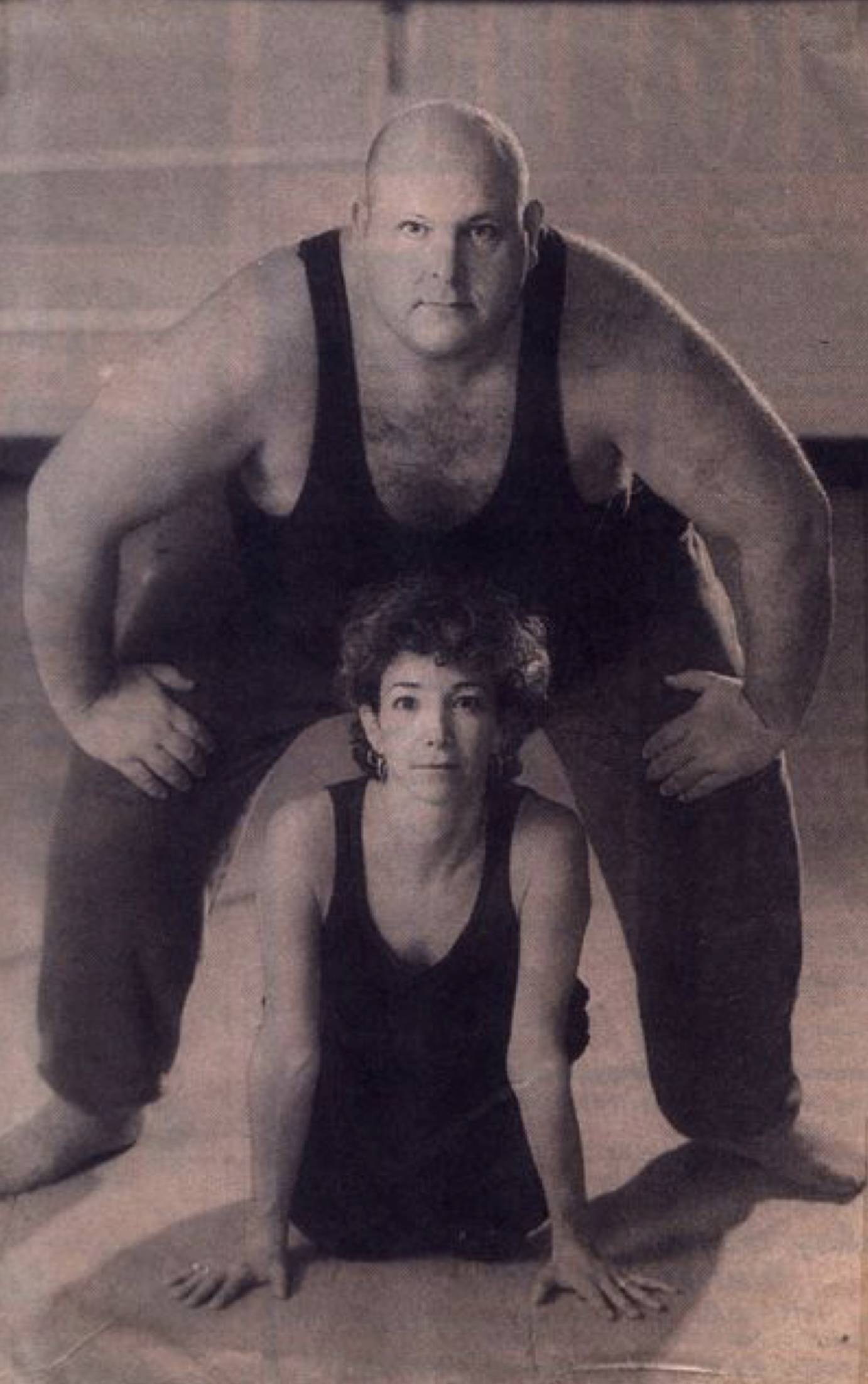
You know, the funny thing is the first day that I joined Bill and Arnie, I walked into rehearsal, saw Larry, and I thought he was the stage manager. Talk about body bias. They never . . . they didn't introduce me to anyone. They asked me to climb all over Larry. And I remember thinking, "Why am I climbing all over the stage manager? "
That's when I realized he was actually in the company.
We started a duet company, Goldhuber and Latsky, and we're still really good friends. This picture, I think, is from The New York Times. I think that it may have been for Altogether Different at The Joyce. I'm not sure.
How long were you together as a company? Goldhuber and Latsky, sounds like a vaudeville act in a way.
HL: I always said it sounded like a law firm . . . I think, seven years.
My partnership with Larry showed me that if you have two people with very different physicalities, you don't have to do much to show diversity; you can use stillness to "paint the picture," which is what we did in our first piece. We stood a long time at the beginning (to Mozart) and then changed places. The audience most always laughted at that point. Then we slowly built upon that sparseness to create intricate movement.
People, you know, they see this really big man with this very small woman, and it resonates on so many different levels. Working with Larry was a precursor to working with people with disabilities. Not that I never thought I'd work with people with disabilities, but I never really considered it, especially since I was so consumed in catching up technically as a relatively "new" dancer. It was because of Bill and Arnie and then my work with Larry, that my former producer, Jeremy Alliger, introduced me to Lisa Bufano. She changed everything.
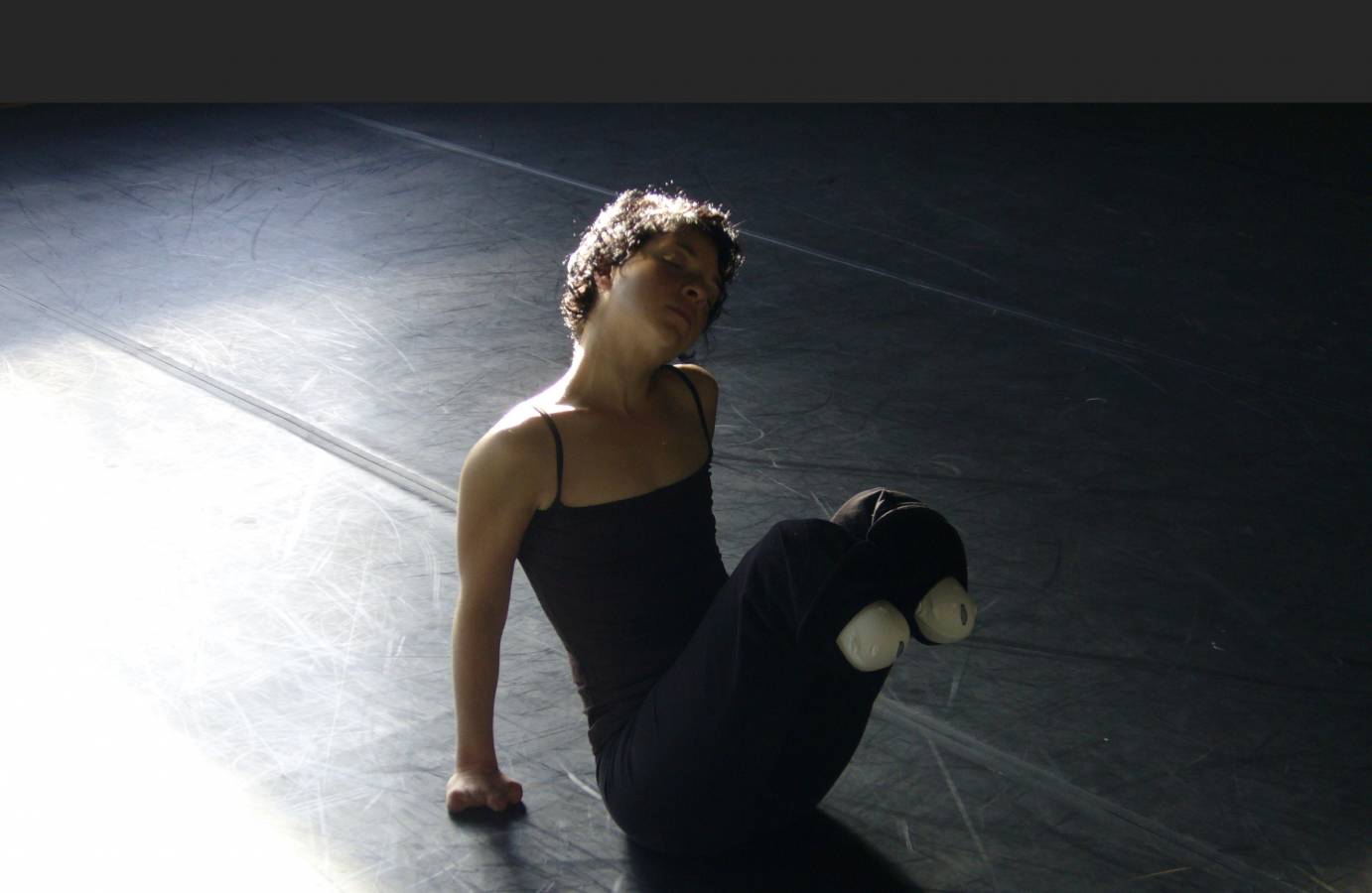
HL: Jeremy, who ran Boston's Dance Umbrella, met Lisa at a party. She had just gotten a grant, I think, from Franklin Furnace and needed to make a solo for herself to perform in New York City. Jeremy recommended that she speak to me.
When I talked to her, I really liked her voice; I just really liked her voice and our conversation. So I agreed to help her. We ended up working for six months on this 25-minute solo. It was an incredibly intimate experience. I'd never worked with someone with a disability. I had no experience with the community, and she was my muse, such a stunning performer.
She changed the standard for me; I say this all the time. I saw her vulnerability and her fierceness. Even when we filmed her for Judson church, and that's not a great quality film, you can feel her through the film. She was so honest and exposed.
When Jeremy introduced me to Lisa, it was like opening up this whole new door to creativity. He ended up being my producer for GIMP and later said, "Adding disabled dancers to Heidi's work is equivalent to an artist who finds all these different, and exciting new colors to paint with."
That's what it felt like.
It's interesting how you worked with actors and other people, like Lisa, that have not trained in dance. Do you feel that you have a special ability to work with novice dancers?
When Jeremy was trying to sell GIMP, at a time when many presenters were not interested in it, he would say that I had the capacity, the ability to hone in on the unique attributes of every dancer I work with. And that's not just about disability right? I wasn't always that interested in this, but since Lisa specifically, and even with Larry, it was about really looking at dancers and seeing what they do that is unique.
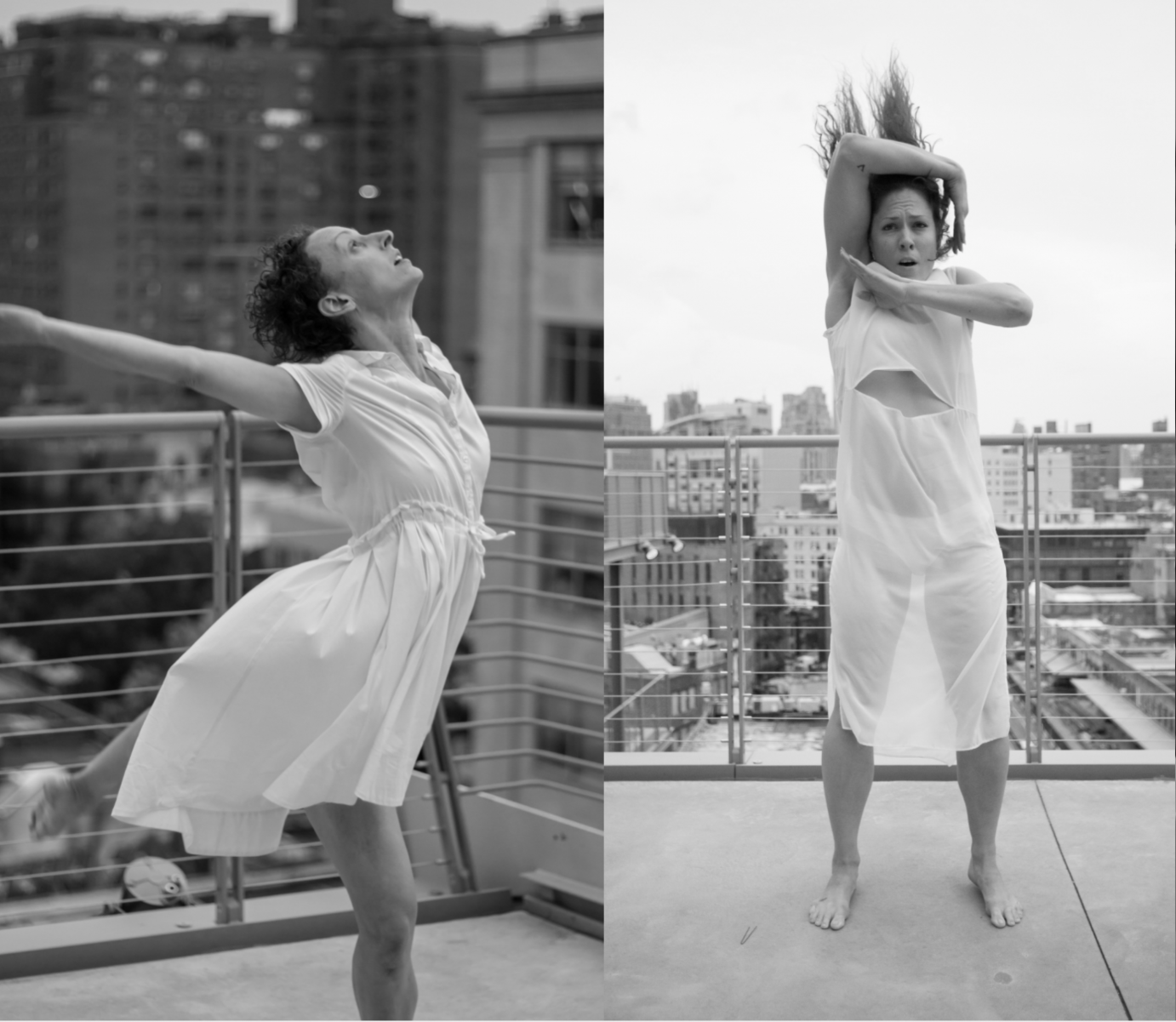
There are two dancers who've been working with me for almost 20 years, Meredith Fages and Jillian Hollis. Meredith is very technical, very technical, and she can move quite fast without losing her real clarity of movement. Jillian is a voluptuous mover. It didn't work when I tried to have them do almost the same thing. I don't mean to say that they never did anything in unison, but they approached movement in such beautifully different ways I was drawn to push their virtuosities foward.
I began to work more intently on bringing out each person's individuality rather than always having them do "my" movement.
And I did that . . . I do that with everyone.
That's a real gift for a dancer to have a director and choreographer who pulls things that naturally are there, out of them.
Ask my dancers about that. I push pretty hard.
Well, someone did say you were capital D for demanding . . . but let's move on.
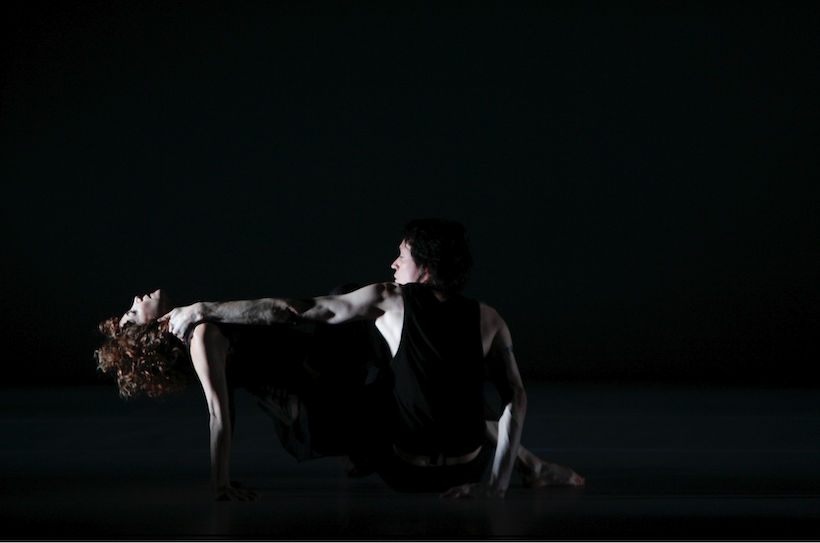
That's a photo of GIMP with me and Lawrence Carter-Long. Lawrence Carter-Long is an activist. He "never" danced before. He has cerebral palsy. He was one of my main mentors. When I asked him to work with us, he thought I was asking him to do PR.
I thought, "Wow, this man is so charismatic." I really wanted to see if I could do what I had done with Lisa, if I could actually choreograph for another person with a disability, without the training. So, I invited him in, and I made my favorite duet between — not between me and him — but between Jeffrey Freeze and Lawrence. It's called Two Men Walking.
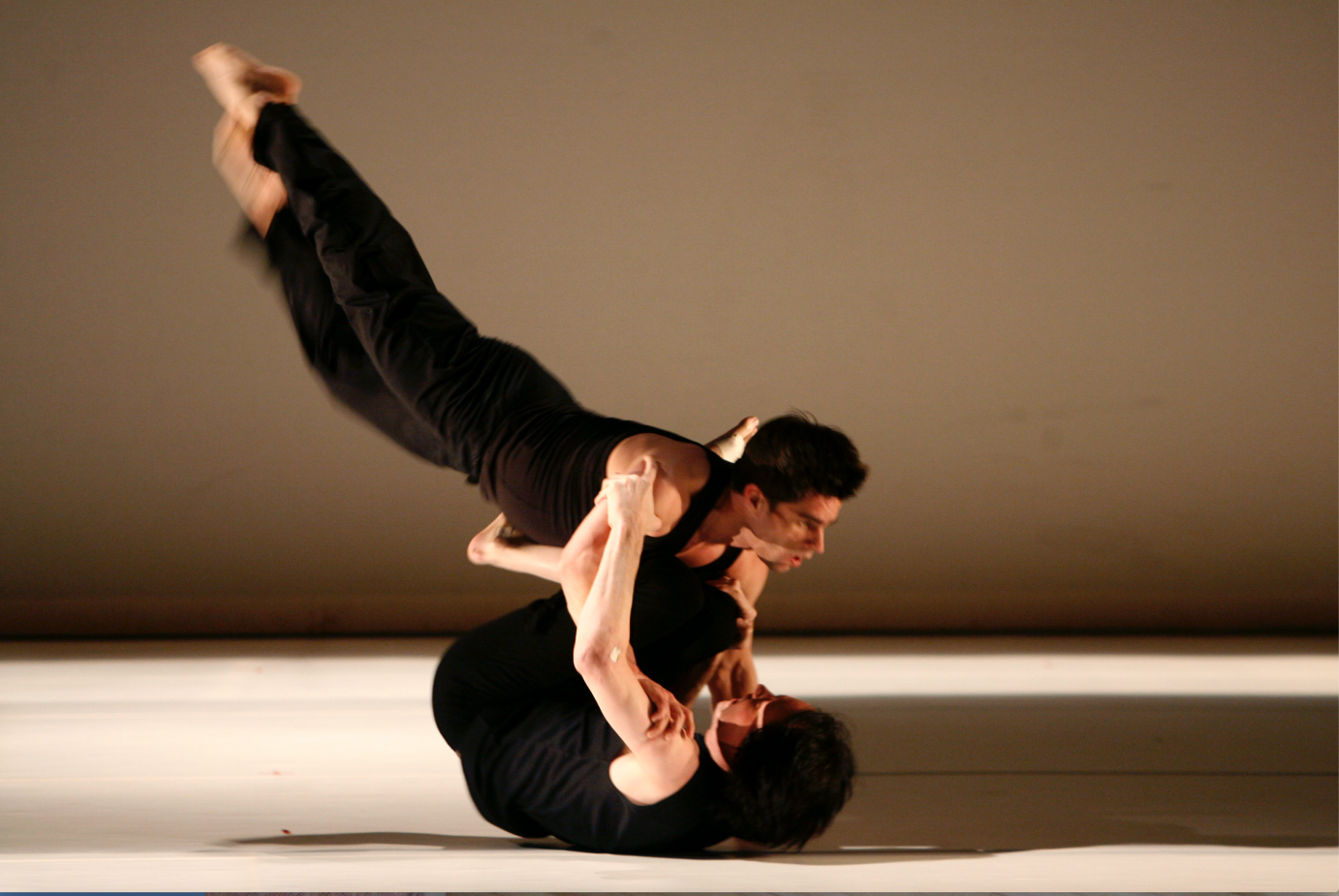
You know, you watch Lawrence walk, and his gait is so rhythmical, right, because everything kind of moves, and Freeze was like this SOLID, close-to-the-ground, muscled dancer with big, thick calves. The two of them together, even just walking, was so beautiful. THAT Juxtaposition. And then we created GIMP together. You know, Lawrence and I would go to many radio interviews, and he knew how to "spin." He taught me how to do a radio interview.
Here is something great that Lawrence Carter-Long said in a New York Times film piece about HLD: "This is no safe, pre-arranged marriage of dance and disability. This is a collision. This is two worlds that come together that ain't supposed to co-exist."
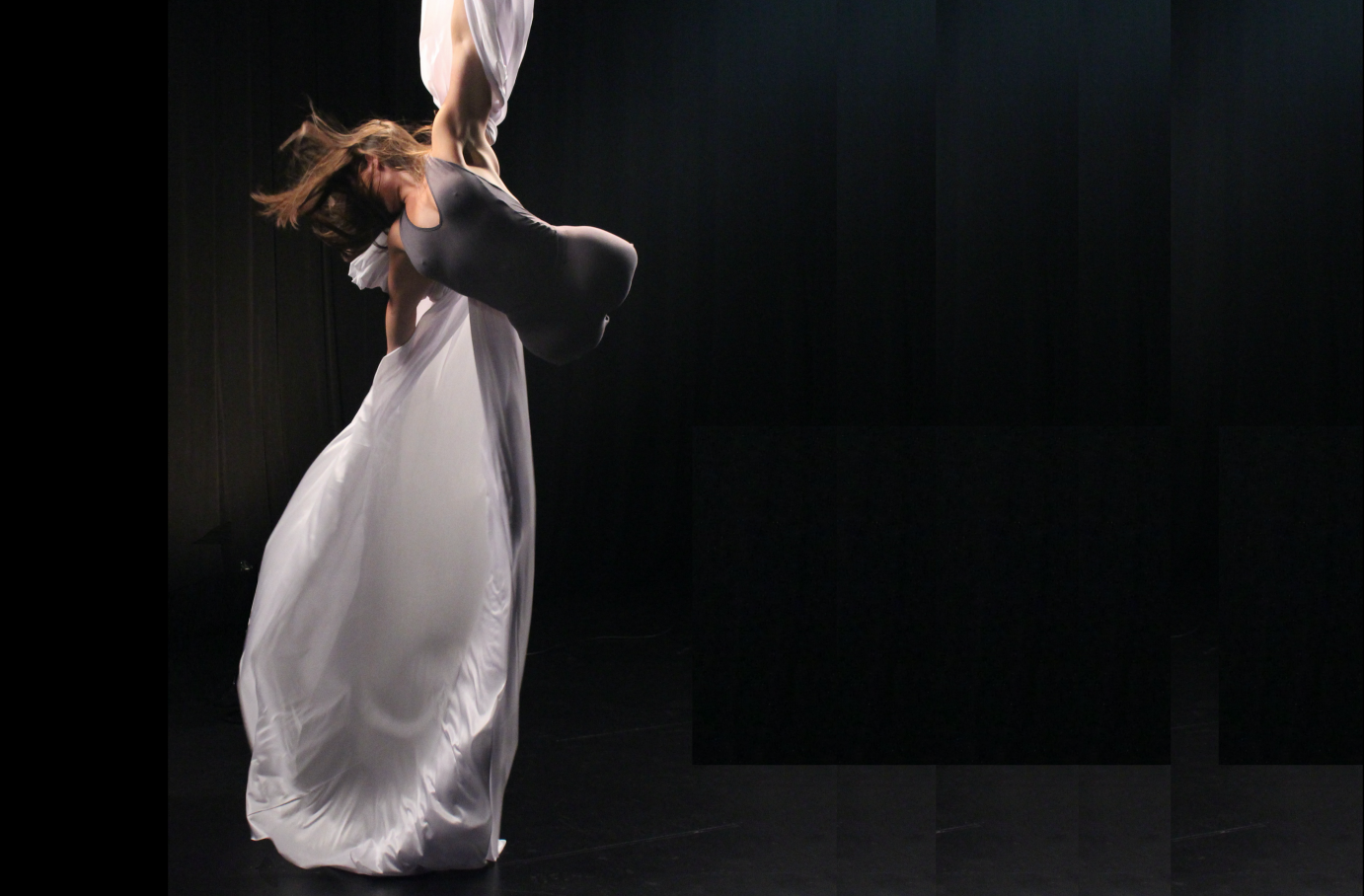
Jennifer Bricker is an amazing athlete. I met her through a colleague, Chris Harrison, who has a company called AntiGravity. I was telling him about GIMP, and he said, "Oh my god, I have this gymnast who doesn't have legs, and she'll never work; you should work with her." He put me in touch with her partner, Nate Crawford.
I really wanted to do an aerial piece for GIMP. GIMP means [one of its meanings] interwoven fabric, and I thought it would be amazing to have a disabled person and a non-disabled person working on the silks as a prologue to the piece. But I was told Jen didn't want to do it; she was very skeptical of modern dance. She hadn't performed at that point; she was in training.
Then I got on the phone with her, and by the end of the conversation, she said, "You know, precisely because this is out of my comfort zone, I should do this." And I fell in love. I made a 25-minute aerial duet in silence in collaboration with Nate and Jennifer.
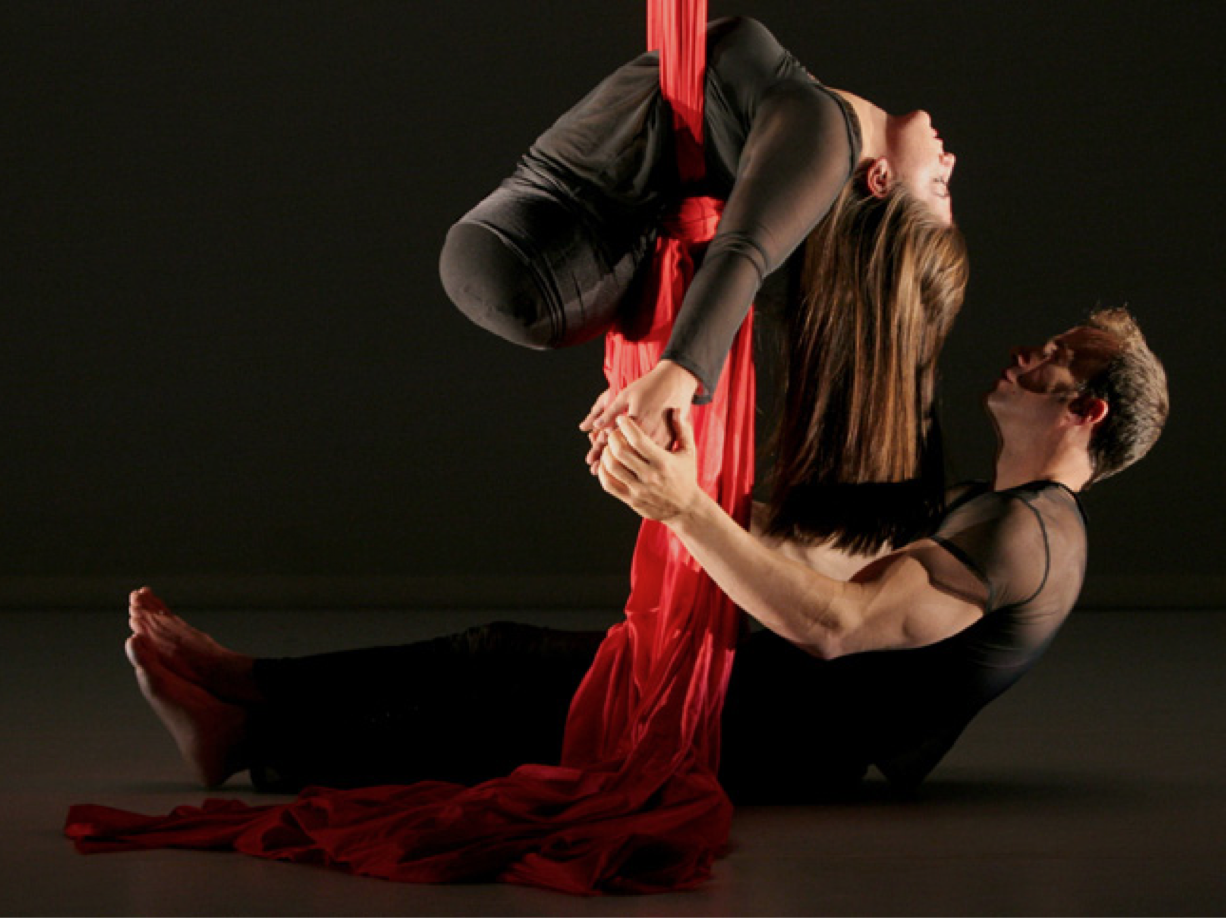
They were hysterical; they were like, "You know, Heidi, an aerial duet is usually five minutes long." And then they'd ask, "Can we smile at each other?"
I'd say, "No."
"Can we smile at the audience?"
"I'm like, no, don't smile at all. Just do the tasks."
Jen still says that those instructions really helped her to become a better performer. She went on to tour with Britney Spears and now tours the world performing and speaking. She is one of the most amazing athletes I've ever met. I just made a volumetric video of her — flew her in from Austria.
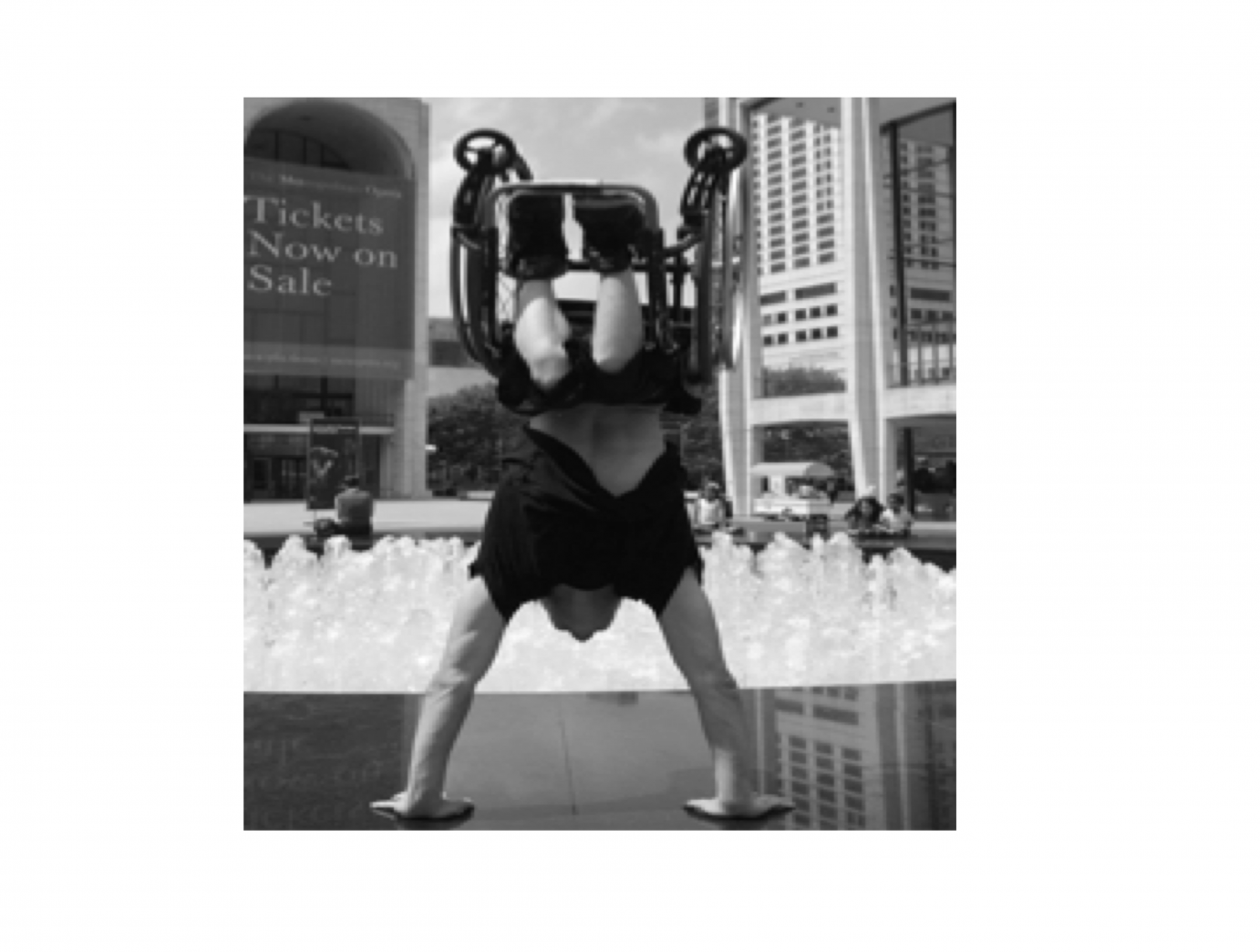
I'm trying to remember his name, sorry; I think it was Fabrice. This is Lincoln Center. He, unbelievably, and we got in trouble for this, did a handstand on the rim of the fountain. Then security came over and said, "You can't do that." But I CAPTURED IT, thankfully. This was for the 25th anniversary of the Americans with Disabilities Act. I wanted to get a group of wheelchair athletes together and create something daring and athletic. We performed at Lincoln Center on the plaza. It was hard because I couldn't find many wheelchair athletes in the city. We didn't rehearse very much, but they were so much fun. I don't know where Fabrice is now; he was in college at the time. But I'd work with him in a heartbeat. He was a brilliant performer and so strong.
How did you get the idea for On Display and your sculpture courts of bodies?
In 2009, I received a Creative Capital Grant for GIMP. Part of what I had to do for that grant was attend a retreat and present about the work. I knew when I spoke about the work, my audience saw people in wheelchairs, wheelchair users, as opposed to the group of diverse dancers I actually had. I remember I showed a five-minute promo of GIMP, then spoke for two minutes. I was very nervous.
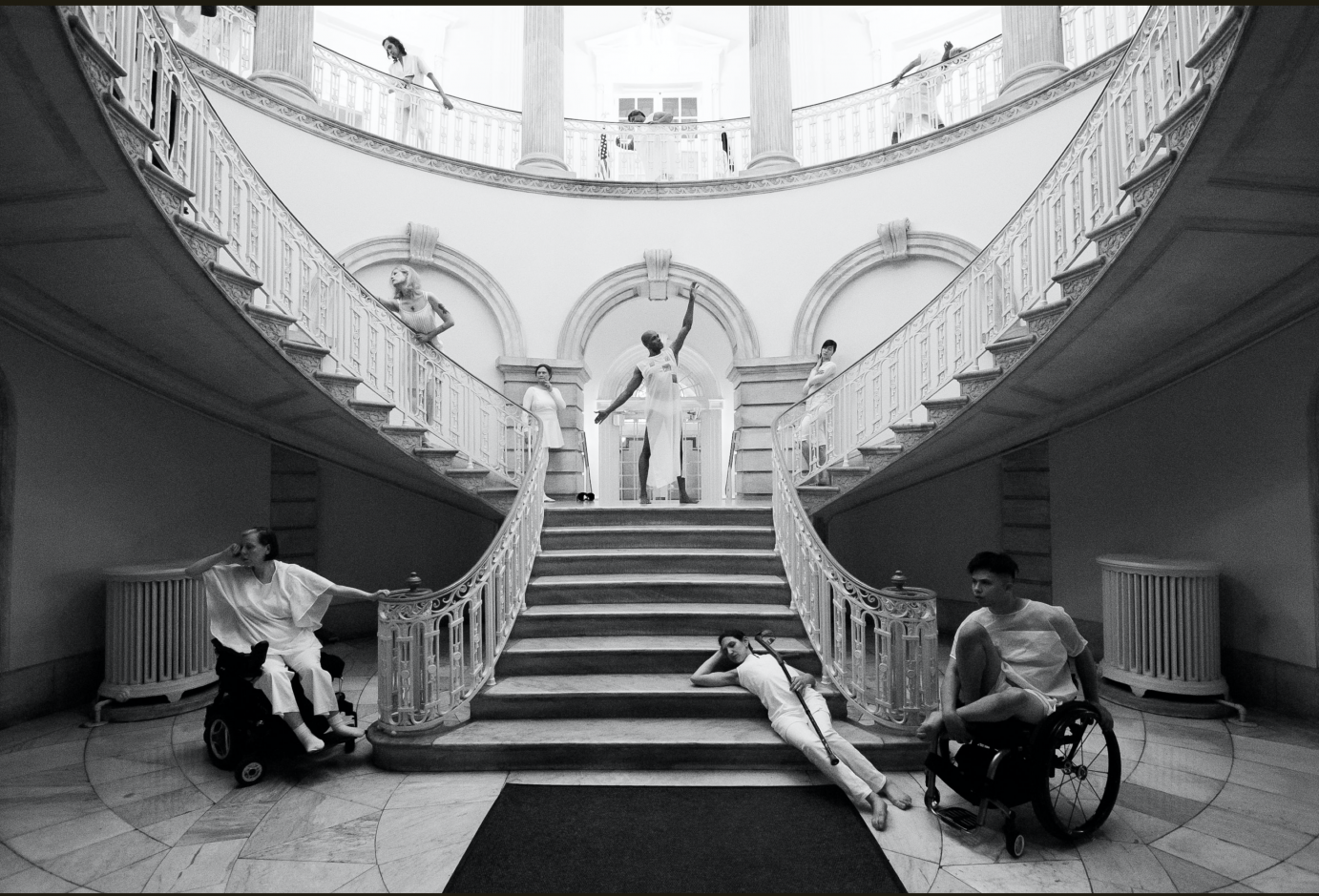
At the end of it, a curator, a gallery owner, followed me out the door to talk. He had such an experience watching the film, and basically, what he said was that he was very ashamed of his response. He had always seen the inherent beauty in sculptures that were missing body parts, but when he looked at some of my dancers who had unusual bodies or were maybe missing part of a limb or whatever, he could not transcend that; he could not see a person, the way he saw a sculpture.It was the first time anyone talked to me about their shame as an audience.
I then wanted to take my dancers and put them in The Met beside the sculptures there. I tried to do it but didn't make any headway. However, in 2015, Victor Calise, the commissioner for the Mayor's Office for People with Disabilities, asked me to do guerilla art throughout the city, exposing the public to people with disabilities. I decided to make these sculpture courts.
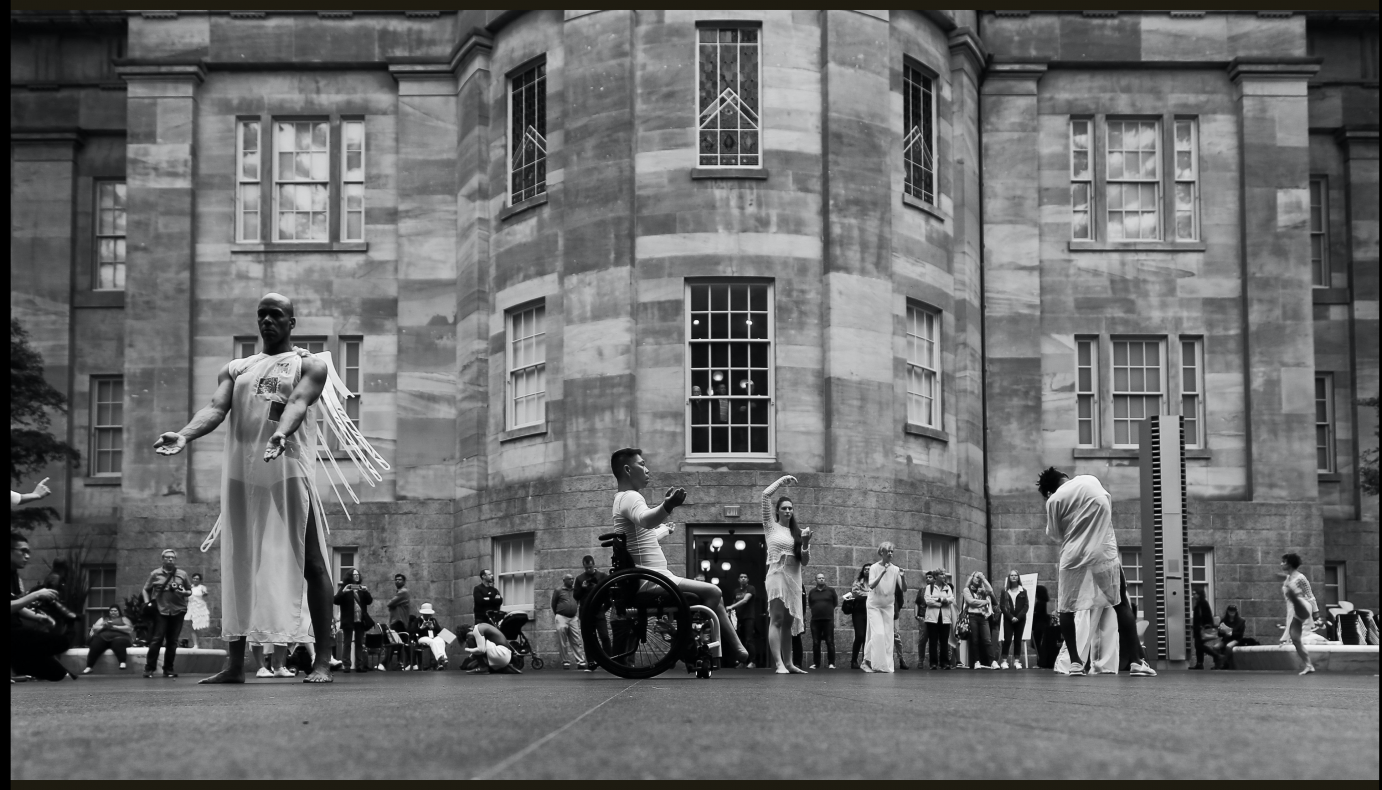
ON DISPLAY AT THE NATIONAL PORTRAIT GALLERY IN DCPhoto By TW COLLINS
You know, as a child, when I went to museums and saw sculptures with missing parts, I never knew they were broken. I perceived them as, well, this is what the artist meant them to be. It didn't occur to me that something broken would be put in a museum. I accepted these as the beautiful artifacts they were. That's partly who I am.
Your reaction says a lot about your perspective as an artist. It's fabulous to see the people walking through the dancers. What kind of responses do you get?
How gorgeous is that? In terms of responses; you get people crying, you get people becoming sculptures, imitating. Children come in and just imitate. I think some people think it's strange and keep moving. Some are afraid to get up close. There's a lot of curiosity. We've found that people will walk through it if they understand what it is. So, whenever we do ON DISPLAY, we have a sign that explains what it is — a sculpture court for people to walk through and take pictures, a lot of pictures.
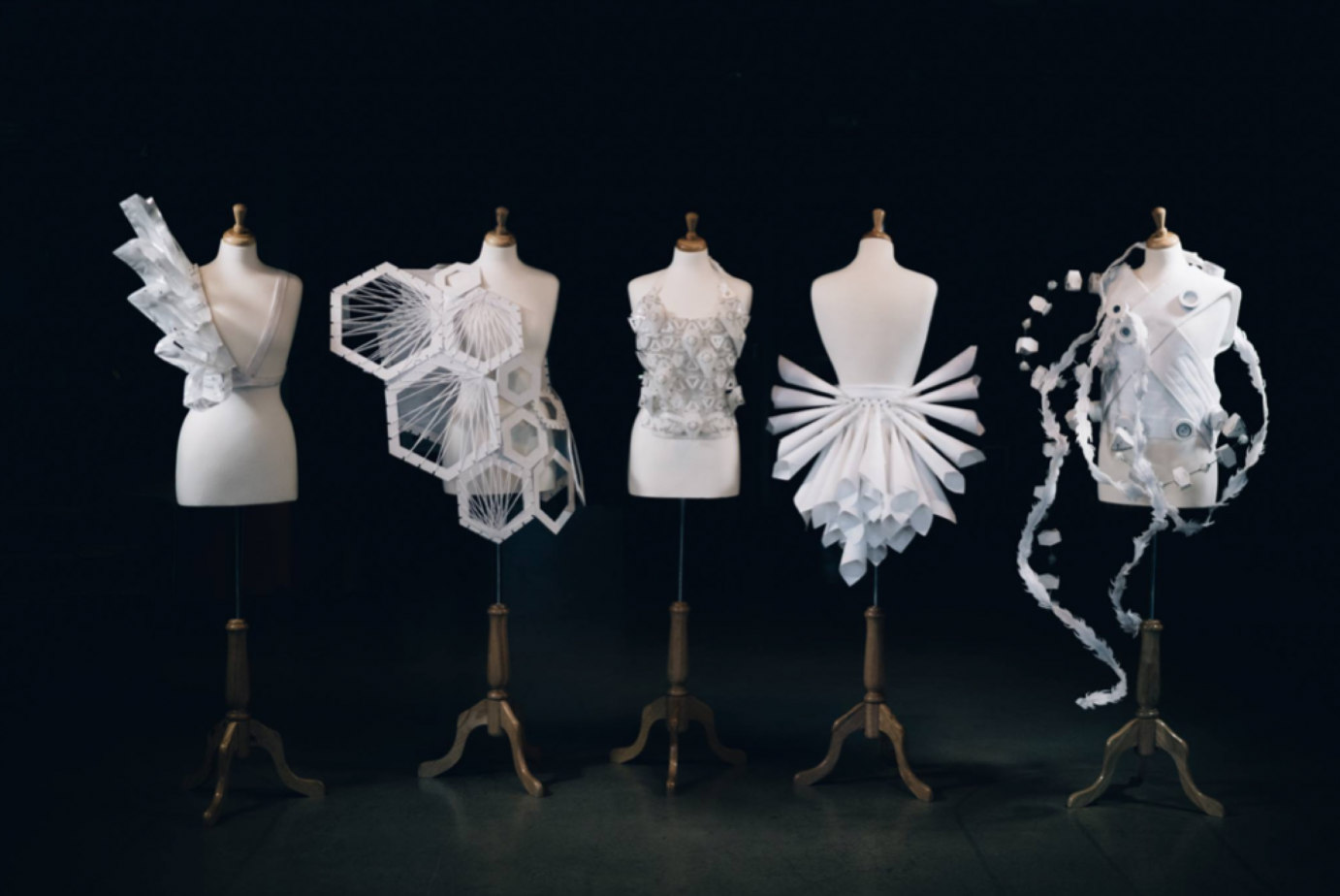
When I did ON DISPLAY at Boston's Institute of Contemporary Art, I met a photographer who happened on the installation and created a film called Juxtapose which he then shared on the internet. It was so beautiful. that we contacted him to see if we could share the film and possibly collaborate. We learned that he worked at a studio called NuVu, and what they do there is quite interesting. It is an innovative school for middle and high school students, and among other hands on projects, they teach them to do 3D printing .
We decided to partner with the school and conduct workshops. First, there were interviews between the students and my disabled performers. I thought, "What an incredible way for young people to connect with somebody with a disability. "
The students spoke with my dancers for about an hour to figure out pieces that might highlight the dancer's individuality or interest, then they divided up maybe two, or three students to one performer, to create a wearable piece. I think it was 2016 when they came to New York. And I saw . . . well I wasn't expecting "anything" like this.
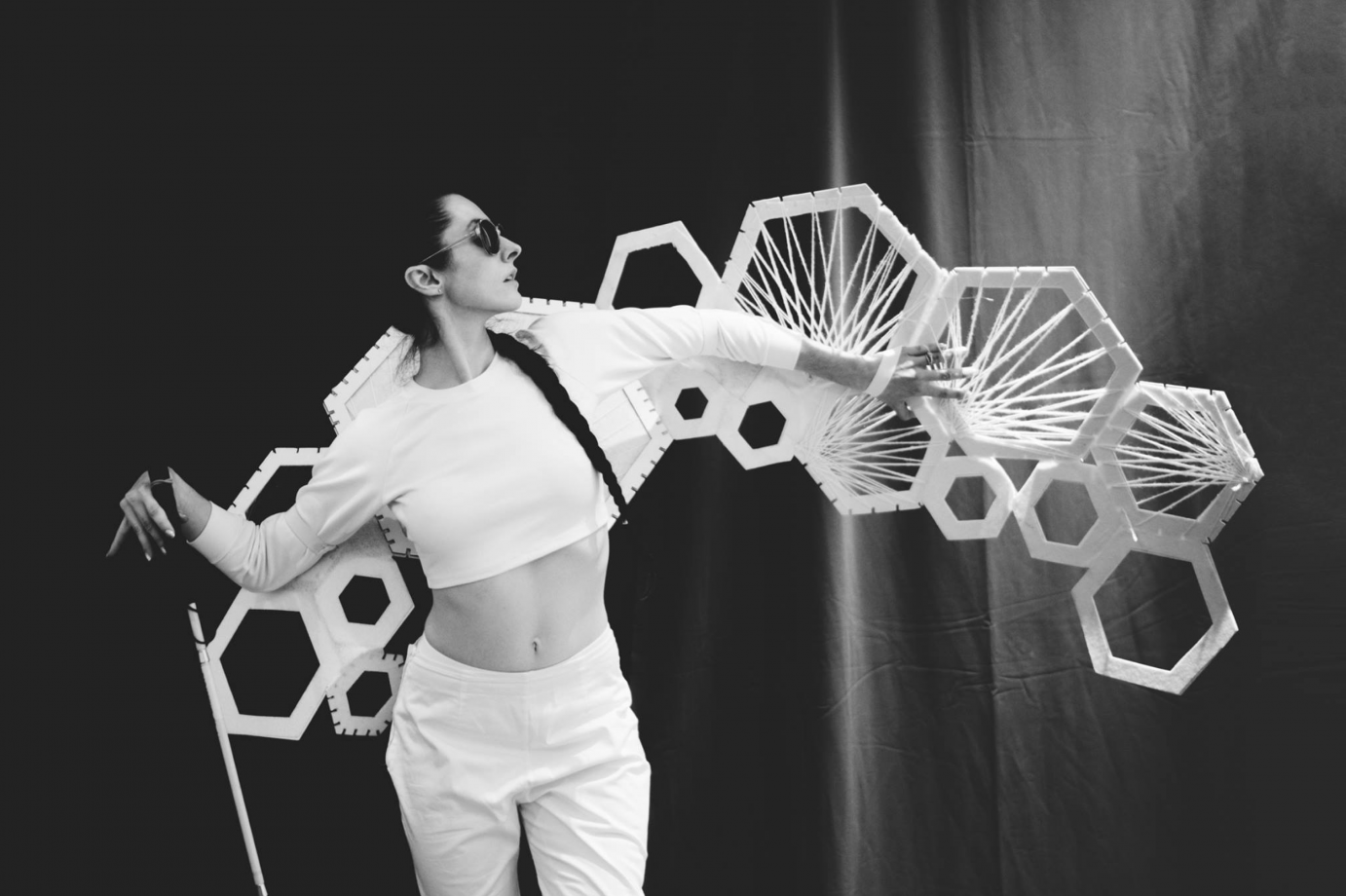
I love this wearable. Over the years, other people have worn it , not just this dancer, who it was made for. We've kept collecting more and more wearables as the students from NuVu with their "Idea Engineer," Rosa Weinberg, continue to give them to us.
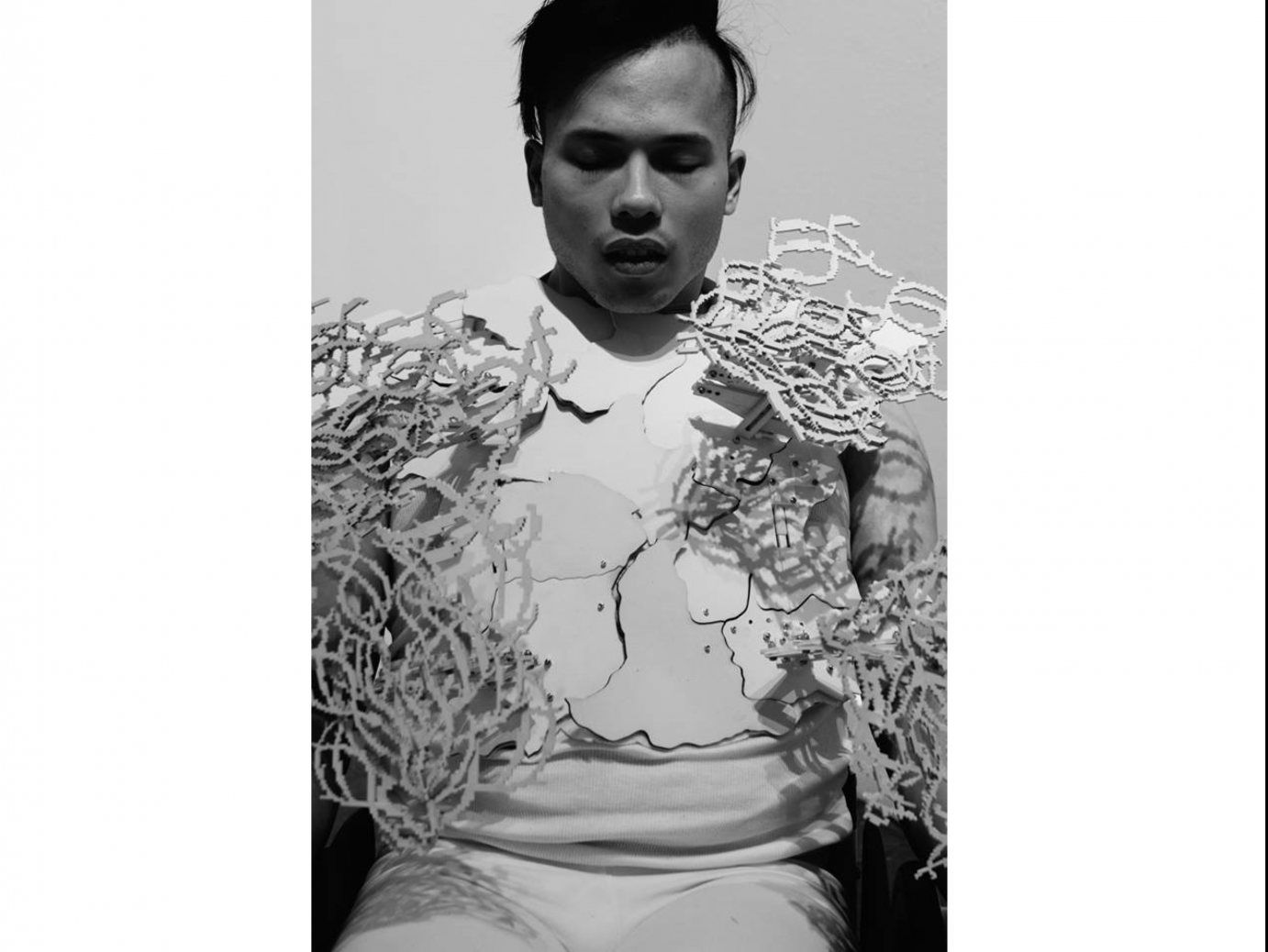
Peter Trojic has cerebral palsy and uses a wheelchair. When he bent backward, these extra pieces, which seem like trees, pushed out as if they were growing from his chest. Very cool. That wearable completely broke, though. That's one of the issues when you're working with middle and high school kids. I think, for the most part, they were using paper, sometimes plastics, and they are fragile.
But I love this picture because it captures Peter in such an internal place.
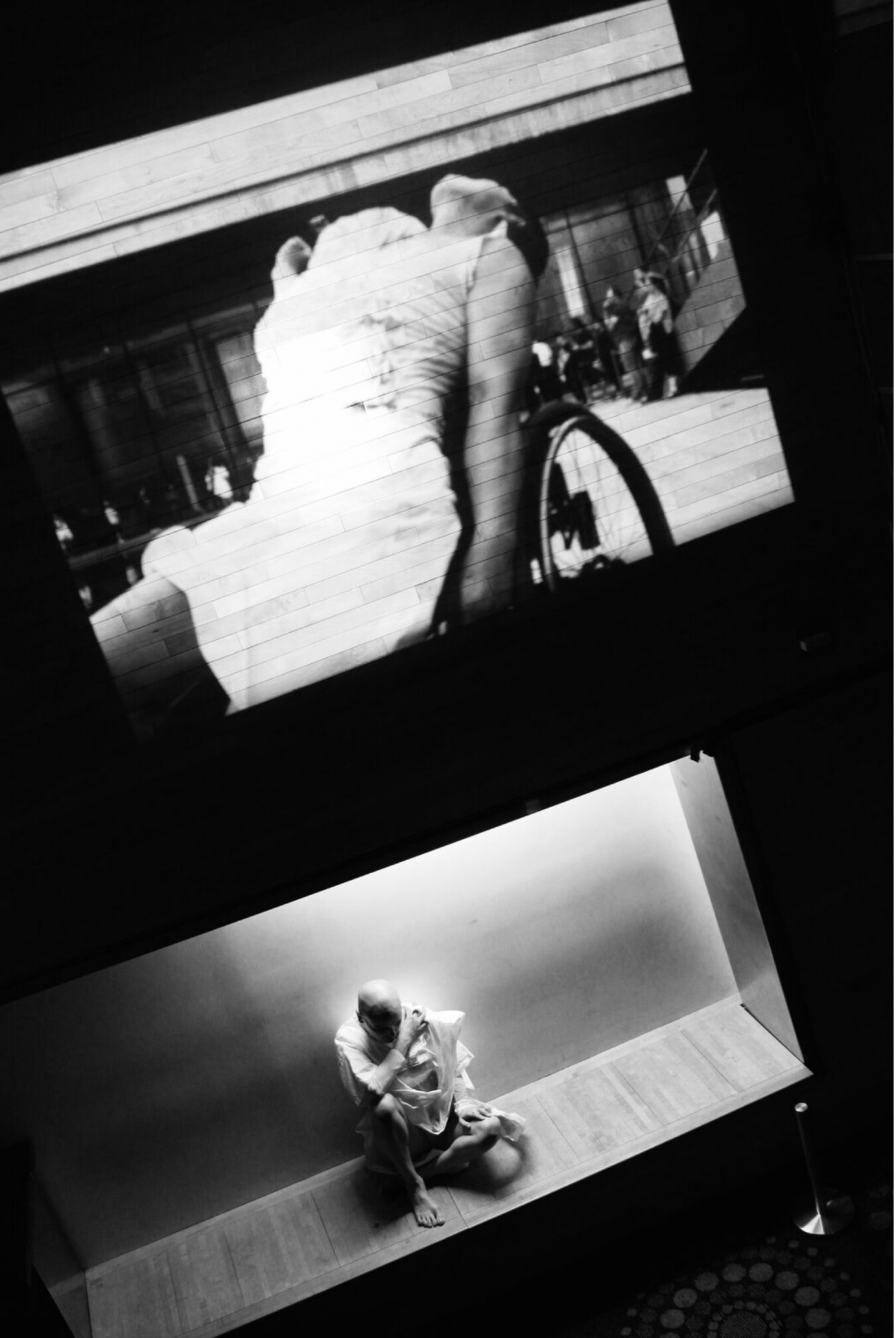
We have many versions of ON DISPLAY. This one is from a full-evening length work D.I.S.P.L.A.Y.E.D. We are at Baruch Performing Arts Center. You see a film by Paul Galando on top. Donald Lee, one of my performers is in the film, Brenda Green, below him is "live" in the lobby. This was the production where the audience entered and walked down the stairs if they could or took an elevator, meandering through exhibits of bodies. This photo was taken from the staircase looking down. We began with a sculpture court, which later imploded (or exploded) into the theater space.
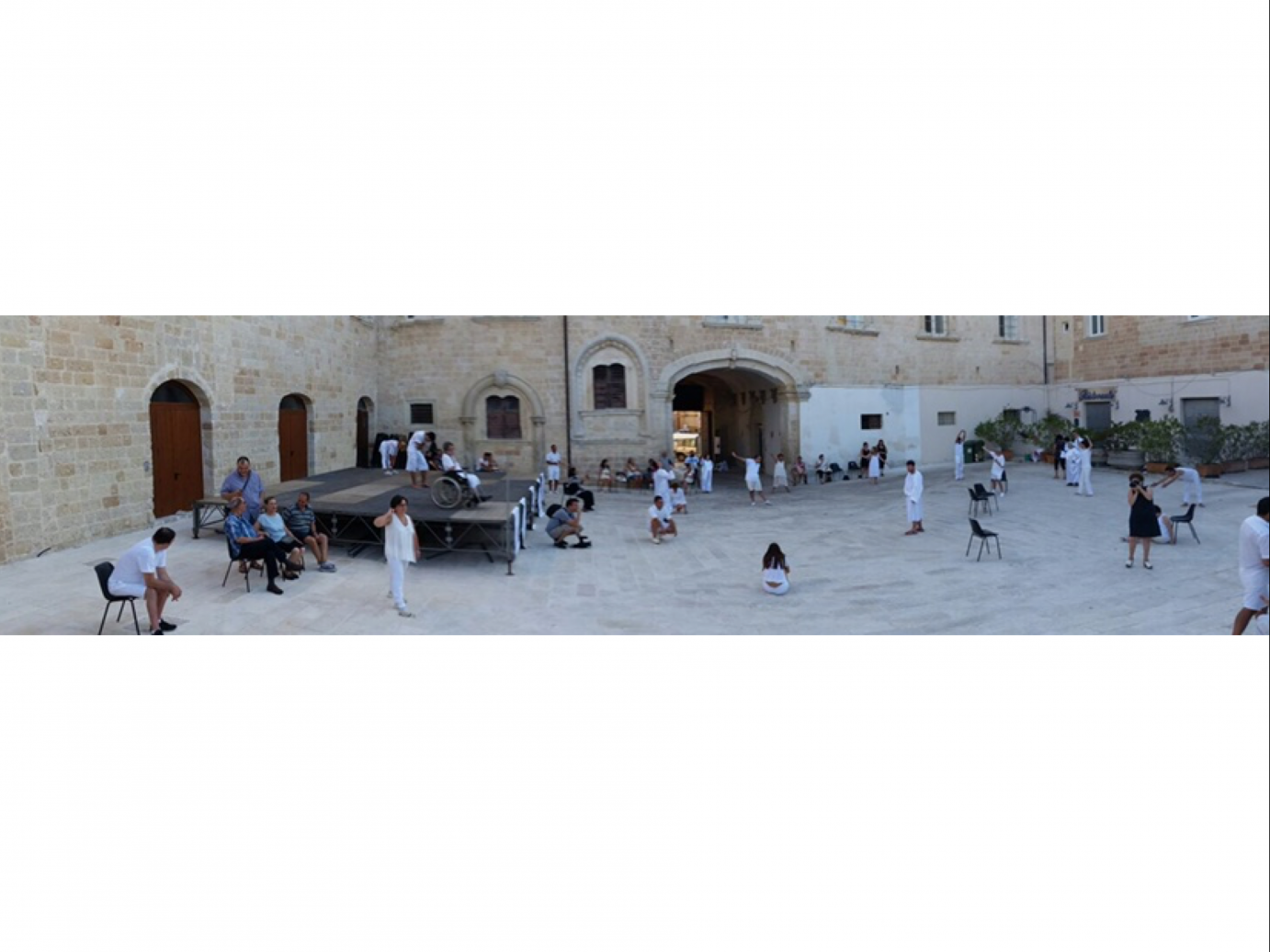
This is Monteroni, Italy, and ON DISPLAY GLOBAL. The beauty of Monteroni is it's the first ON DISPLAY with people who had intellectual disabilities, who were not performers . . . something I never thought I would do. I was taught early on by my mentors that we had to keep the art at a very high standard. Our work shouldn't be a pity party; it shouldn't get sentimental. The idea was to help the disability community by portraying people with disabilities as hugely talented dancers, like the rest of my company.
This was a big shift because I knew this particular group would not be able to do everything the way I wanted it done. They couldn't move slowly; they couldn't keep their eyes closed, BUT they held stillness beautifully. We have a wonderful film of the experience.
When they performed ON DISPLAY GLOBAL, not only did they love it, but the mayor of their town came, and all of a sudden, this community, which had been shunned, was taken into the town and even received a special citation for performing in ON DISPLAY GLOBAL.
What a success story!
Another aspect of ON DISPLAY GLOBAL is the social justice and humanitarian facet, honoring the United Nation's International Day of Persons with Disabilities. So for ON DISPLAY GLOBAL, I let go of some of the limitations I impose on my company in the sculpture court, so more people can participate.
And show their own beauty.
Yeah.
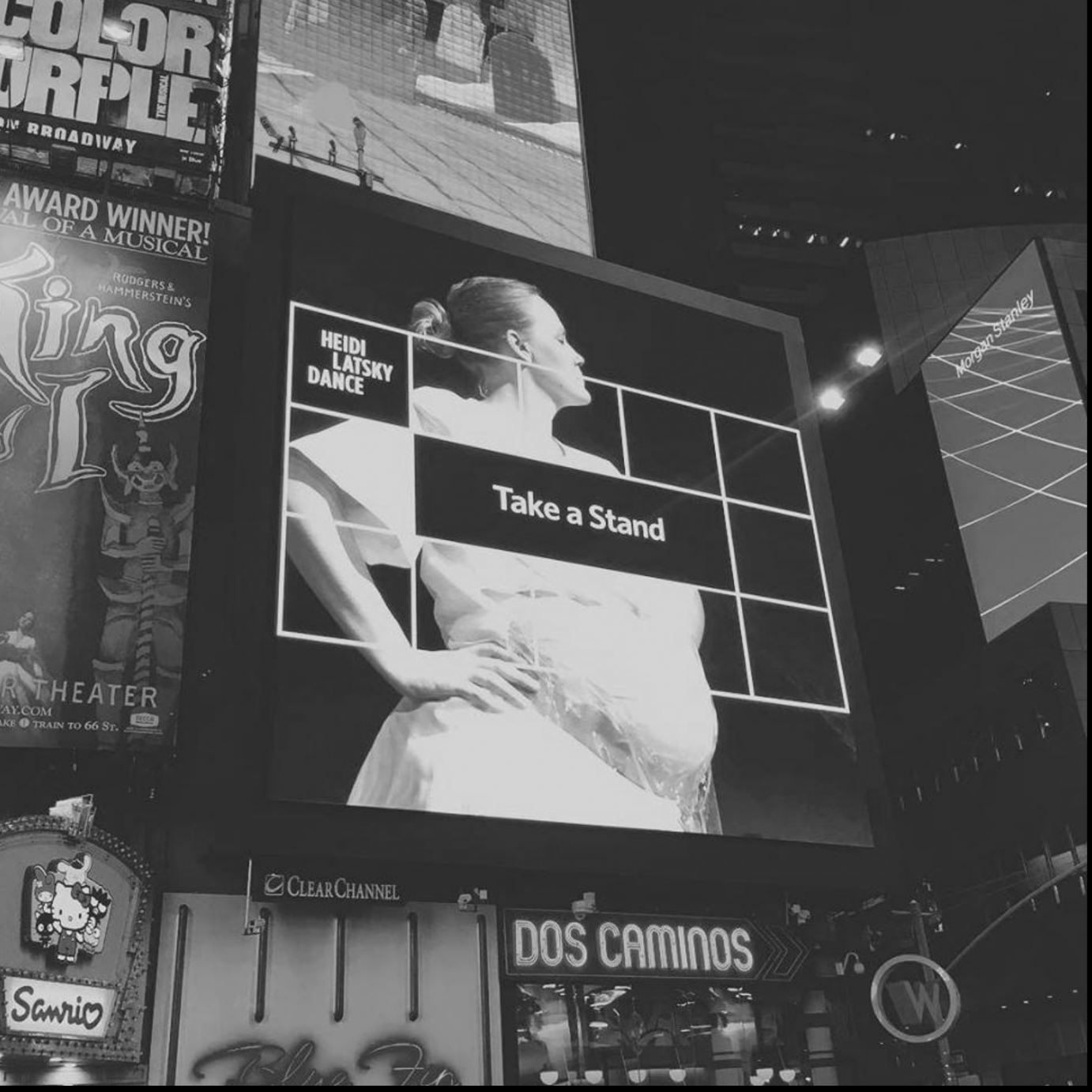
For a period of years, mostly with filmmaker Paul Galando, we did public service announcements, calls to action. We made gorgeous films, you know, that appeared in the middle of Times Square. This performer, Kimberly Olstad, actually works at NYU Skirball and obviously is very pregnant. Since her inclusion in ON DISPLAY right at the beginning, I have always looked to include pregnant women, who are many times subject to body shaming.
What was the reaction to having your work out on on the jumbotron?
I LOVED IT! We were on every five minutes one year. We got millions of views. People were looking at us all the time. Time Square, it's all splashy with lots of color. Then, all of the sudden, you have this, a black-and-white film including people with disabilities and differences, not "typical" models.
The contrast for me was stunning and important! I was so proud of my company and was thrilled to represent, amidst so much glitz and glamor, something very real, vulnerable, and beautiful.
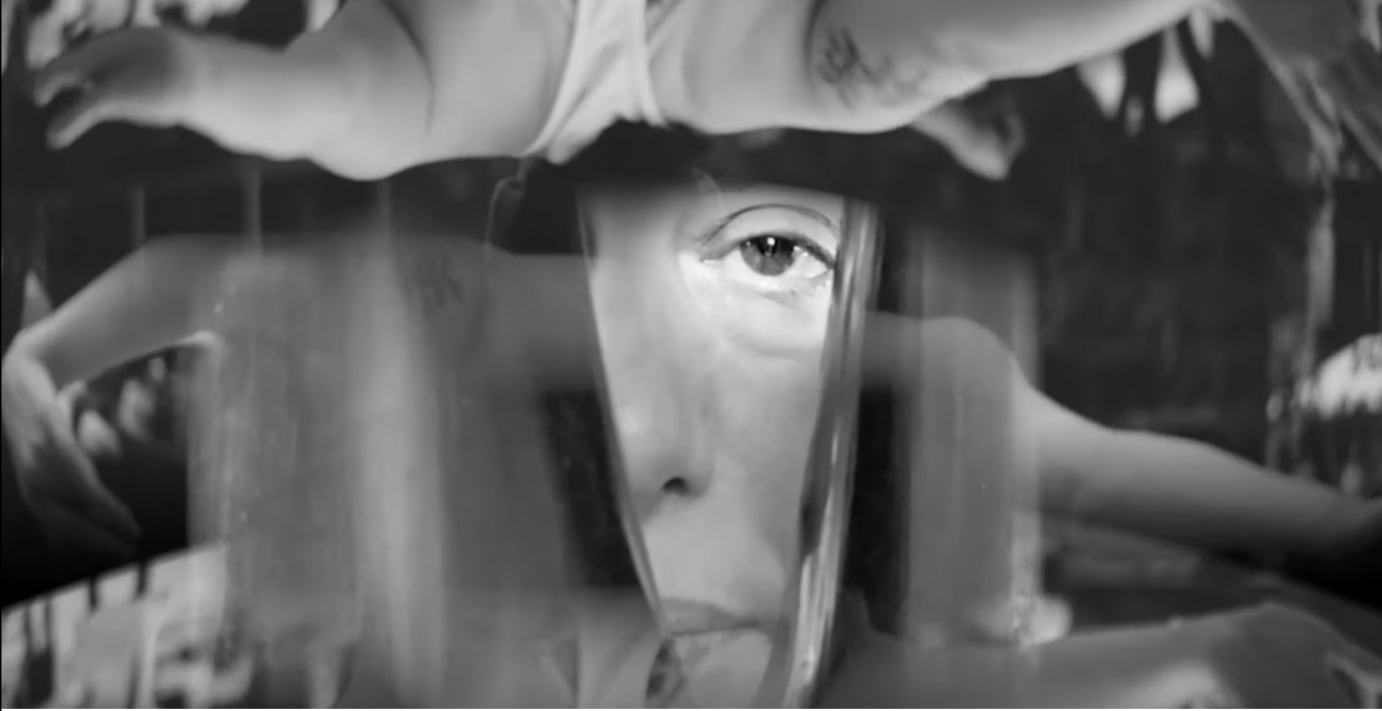
This is a photo captured from a 360 degrees experience . . .
Some of your new creations during this period . . .?
Virtual creations. And this was made with two developers right out of schooI, the incredibly talented TJ Butzke and Mallika Challandria. It's a beautiful short film, and with a certain programming, like, through YouTube, you can you can stop the film and move it around and have a 360-degree experience.
That's amazing. And is it available for us to see ?
We have a campaign right now called ADVANCE/ACCESS. For $50, up until December 31st, people can access a sneak peek into our virtual work that has not been released yet: a couple of films that I've created and one of our volumetric videos. We are also offering discussions where I talk to my collaborators, really innovative artists.
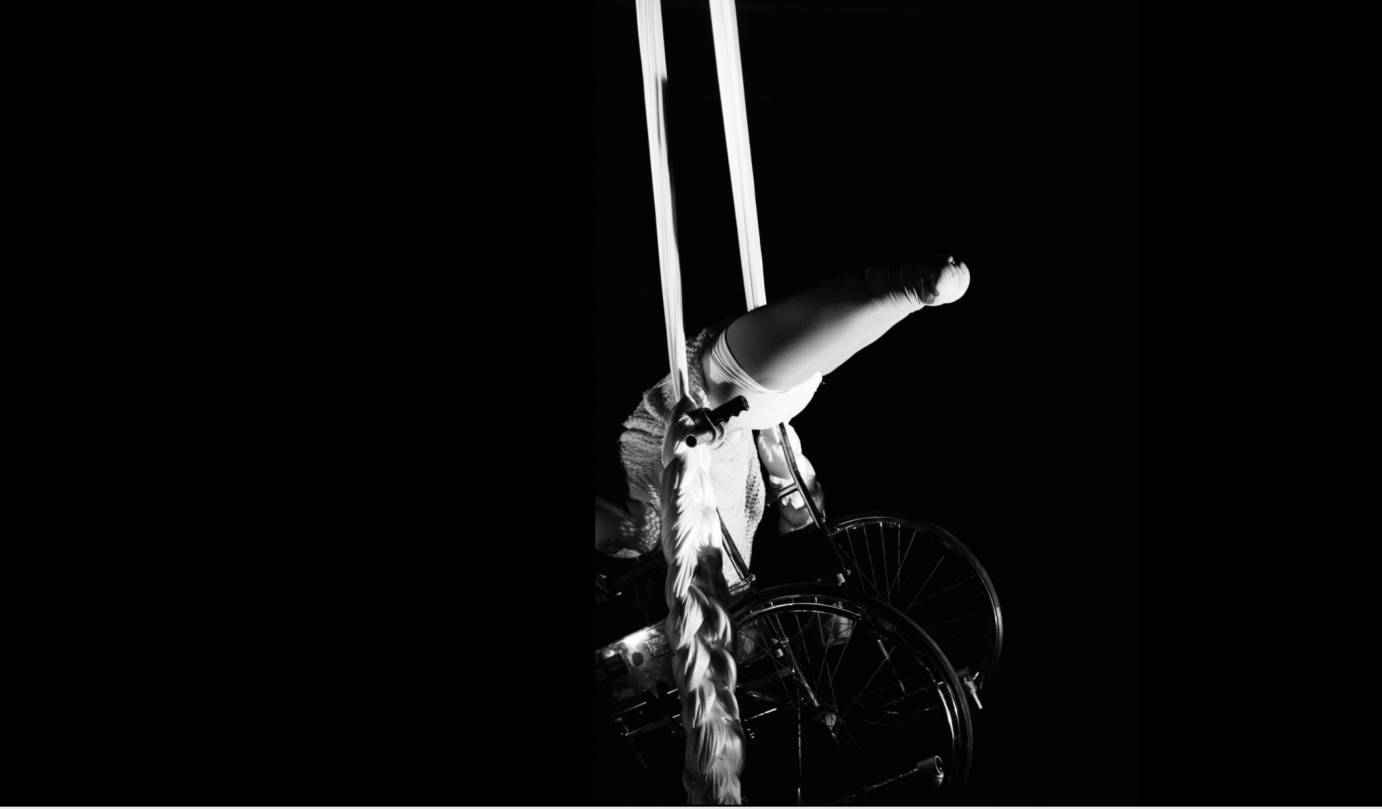
I love this image. The photograph was taken by my daughter, Charlotte Jones. It's from D.I.S.P.L.A.Y.E.D. This section is called Suspended Disbelief. Recently, with a Canada Council grant, I remotely re-worked this solo for film. Eventually I'd like to make a hologram of this to show the different angles of the experience.
This is Erin Ball, a fellow Canadian, with her wheelchair suspended by silks,
There is NO spectacle and NO presentation. I wanted her to close her eyes as if the silks and the chair were part of her and she's in a deep meditation.
She told me that coming back to this piece during COVID was remarkable. She hasn't performed it since 2018. But, the stillness, the internal experience took on completely new meaning because she's dealing with the isolation that COVID has imposed on all of us.
JOIN ON DISPLAY GLOBAL 2020
Heidi Latsky Dance welcomes you to join the worldwide, human sculpture court that challenges our collective understanding of seeing and being seen.
ON DISPLAY GLOBAL is a worldwide initiative honoring the United Nations' International Day of Persons with Disabilities. Each year, on December 3rd, local leaders from communities around the world coordinate live, human sculpture courts in their cities. This celebration began in 2015 with two sites - New York, NY and Hobart, Australia - and has since grown to encompass over 100 sites. This year, due to the COVID-19 pandemic, ON DISPLAY GLOBAL will be a 24-hour, live-streamed Zoom event.
This article is part of the 2020 Moving Visions Initiative which welcomes artists and enthusiasts to guide The Dance Enthusiast's coverage as guest editors. Our guests share their passion, expertise, and curiosity with us, while we celebrate their accomplishments and viewpoints.
The Dance Enthusiast Asks questions and creates conversation.
For more of The Dance Enthusiast Asks, click here.
The Dance Enthusiast - News, Reviews, Interviews and an Open Invitation for YOU to join the Dance Conversation.
Created in 2020 as a way to lift up and include new voices in the conversation about dance, The Dance Enthusiast's Moving Visions Initiative welcomes artists and other enthusiasts to be guest editors and guide our coverage. Moving Visions Editors share their passion, expertise, and curiosity with us as we celebrate their accomplishments and viewpoints.




